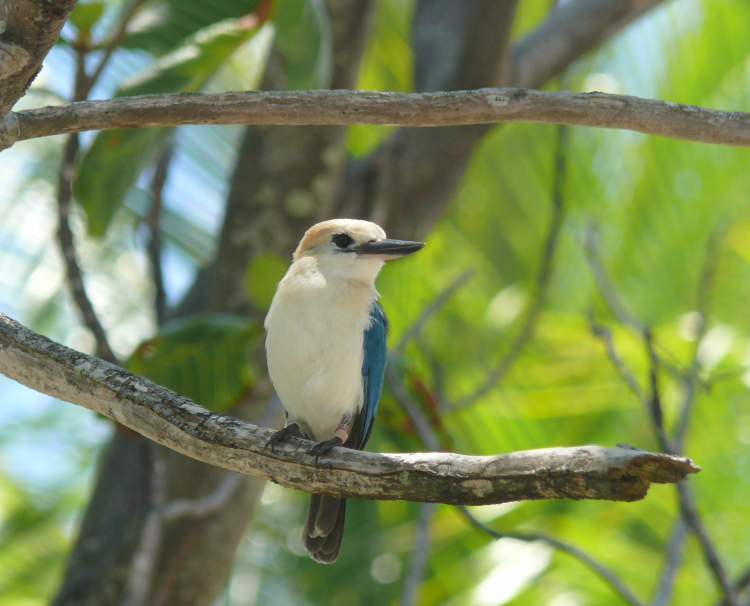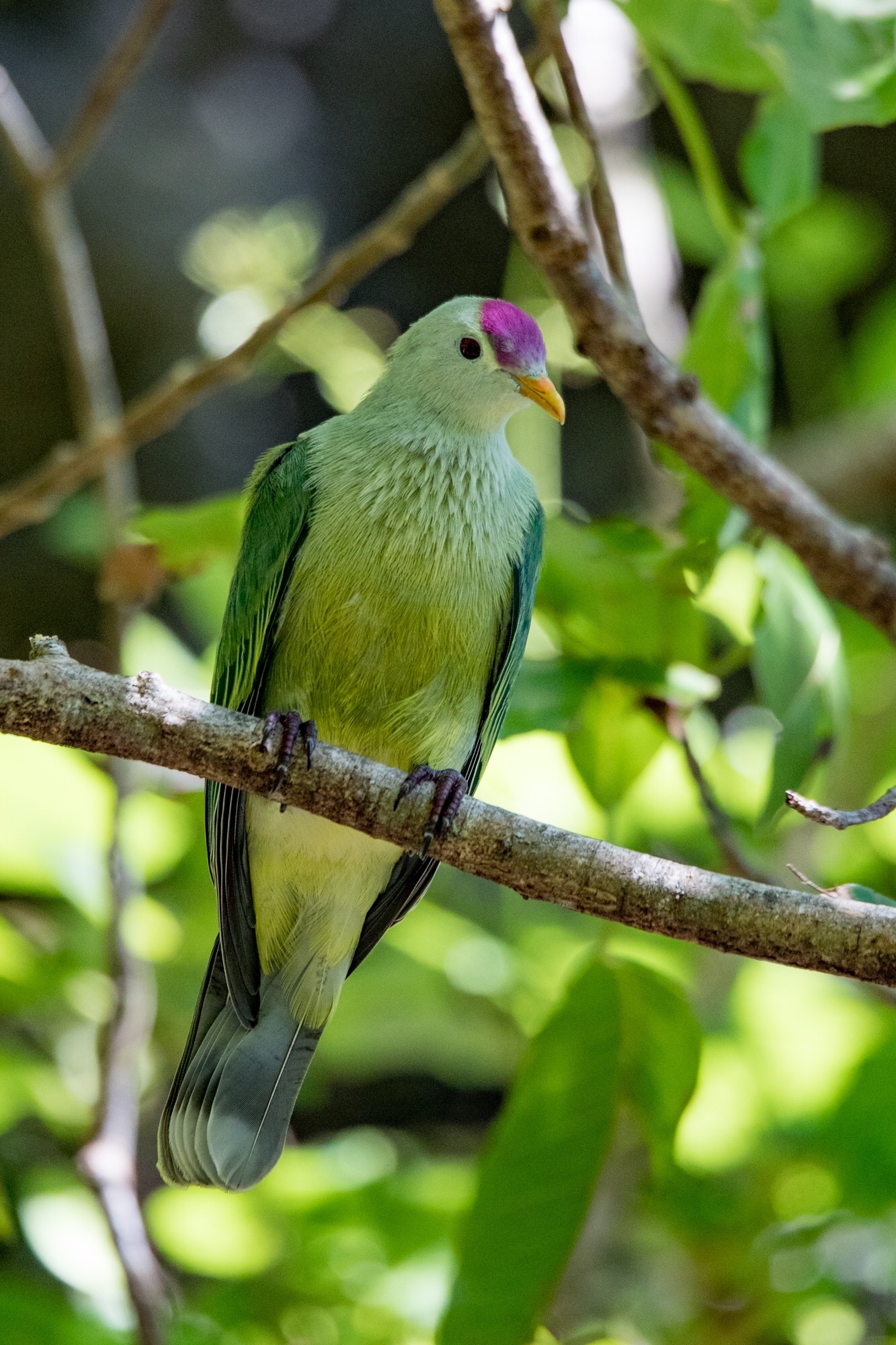Tuamotu Tropical Moist Forests
The ecoregion’s land area is provided in units of 1,000 hectares. The conservation target is the Global Safety Net (GSN1) area for the given ecoregion. The protection level indicates the percentage of the GSN goal that is currently protected on a scale of 0-10. N/A means data is not available at this time.
Bioregion: Southeast Polynesian Islands (OC3)
Realm: Oceania
Ecoregion Size (1000 ha):
95
Ecoregion ID:
632
Conservation Target:
6%
Protection Level:
7
States: French Polynesia, Pitcairn Islands
The coralline atolls of the remote and far-flung Tuamotu Archipelago offer respite to millions of migratory shorebirds and their sandy shores support hardy thickets that are home to kingfishers, monarchs, lorikeets, and reed warblers, as well as giant coconut crabs. Further south in the Gambier and Pitcairn islands denser forests have taken hold on eroded volcanic hillocks and upraised limestone islands.

The flagship species for the Tuamotu Tropical Moist Forests ecoregion is the Mangareva kingfisher. Image credit: Courtesy of Luca Tringali
This vast ecoregion encompasses the 76 atolls and islands of Tuamotu, and stretches 1,800 km to the Gambier Islands and the Pitcairn Islands 1,000 km to the east. The biodiversity present reflects the archipelago’s extreme isolation and difficult conditions of surviving on atolls. Tuamotu atolls support a mixed broadleaf strand forest.
Common tree elements are Suriana maritime, Pemphis acidula, Scaevola spp., Guettarda speciosa, Tournefortia argentea, Pisonia grandis, Pandanus tectorius, Pipturus argenteus, Sesbania coccinea, Cordia subcordata, Morinda citrifolia, and Calophyllum inophyllum. The endemic Myrsine niauensis is found on Niau Atoll. Uplifted limestone (makatea) support a dense, tall forest dominated by Pisonia grandis, Pandanus tectorius, Ficus prolixa, Homalium moua, Guettarda speciosa, and the endemic palm Pritchardia vuyltekeana. Henderson Island plateau forest has Thespesia populnea and shrubs like Bidens hendersonensis, Nesoluma st-johnianum, and Geniostoma hendersonensis.
At higher altitudes on Pitcairn and Gambier Islands one finds trees such as Homalium moua and Metrosideros collina. The isolated Henderson and Pitcairn Islands have around 14% endemism for vascular plants, though endemism is much lower on the atolls. Many seabirds breed here, including 22 species in the Tuamotus and 14 species in the Gambier and Pitcairn Islands. Pitcairn and Henderson Islands have 5 endemic land birds, a good number for such small islands. The Tuamotus have an endemic sandpiper, the Tuamotu sandpiper (Prosobonia cancellata), which is now restricted to uninhabited, rat-free islands.

Ptilinopus. Image credit: Creative Commons
Many of the atolls still retain relatively pristine vegetation, though some have been cleared to some extent for settlements, copra plantations, or nuclear testing. Henderson Island remains as one of the most intact makatea islands in the world, and the Polynesian rat currently is the only introduced vertebrate. The low level of invasive species present has allowed many native species to persist, including two species of land bird, nine endemic land snails, and at least 450 arthropod species, including 50 endemics.
The endemic parrot, the Henderson lory (Vini stepheni), feeds largely on the nectar of only two plant species. The Henderson Island fruit-dove (Ptilinopus insularis) has a narrower fruit diet than all other Ptilinopus species so far studied, feeding on all 14 fruiting species available on the island and dispersing seeds of those plants. The critically endangered Mangareva kingfisher and its close relative Niau kingfisher, both numbering at only about 130 individuals, are endemic to Niau. Polynesian settlement led to the extinction of at least 8 to 15 pigeon species as well as dozens of other endemic birds from the Tuamotu ecoregion.
The introduction of black rats and cats has had major impacts on native birds throughout the rest of the Tuamotus. Goats and rabbits introduced in the Gambiers also help degrade most of the native habitat. Rising ocean levels may inundate many of the atolls over coming decades.
The priority conservation actions for the next decade are to: 1) strengthen protection and management of the only area of native vegetation remaining in the Gambier Islands on the steep south slope of Mt. Mokota, Mangareva Island; 2) continue to put in place effective management of Henderson, Oeno, Pitcairn, and Ducie Islands, including intensive invasive control or eradication on key islands or habitat remnants; and 3) carry out intensive community-supported invasive control on key atolls still providing refuge to threatened bird species, such as the Tuamotu sandpiper and Mangareva kingfisher.
Citations
- CEPF. 2007. Ecosystem Profile: Polynesia/Micronesia Biodiversity Hotspot. Critical Ecosystem Partnership Fund, Washington, DC.
- Cowie RH. 1992. Evolution and extinction of Partulidae, endemic Pacific island land snails. Philosophical Transactions of the Royal Society of London Biological Sciences 335:167-191.
- Florence, J. 1987. Endemisme et evolution de la flore en Polynésie Française. Bulletin of the Zoological Society of French Polynesia 112:370-380.
- Male T. 2018. Tuamotus Tropical Moist Forest. Accessed 1 June 2018 at https://www.worldwildlife.org/ecoregions/oc0115.
- Mueller-Dombois D, FR Fosberg. 1998. Vegetation of the Tropical Pacific Islands. Springer-Verlag, New York.



